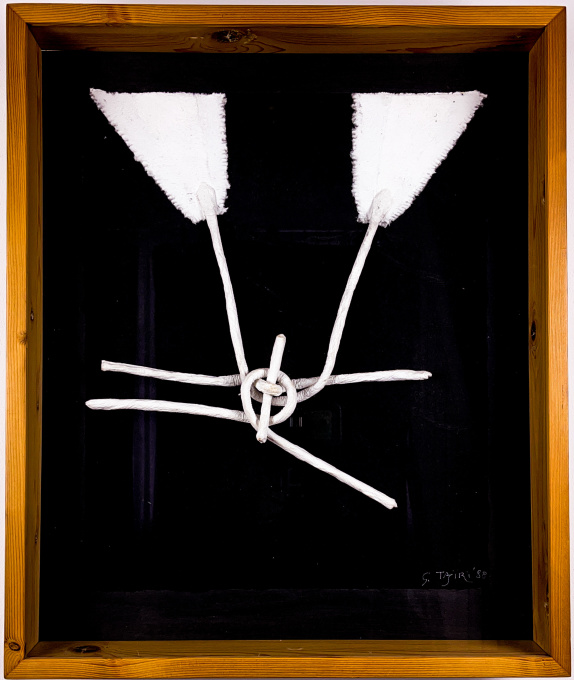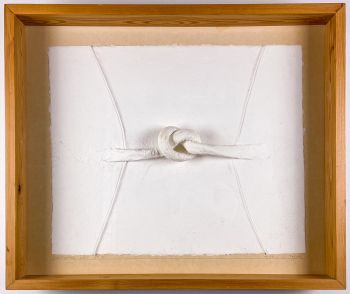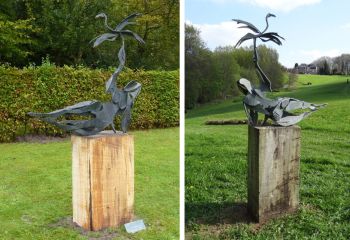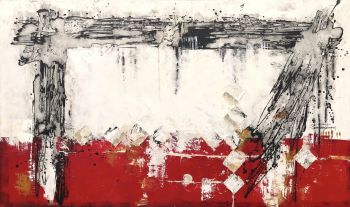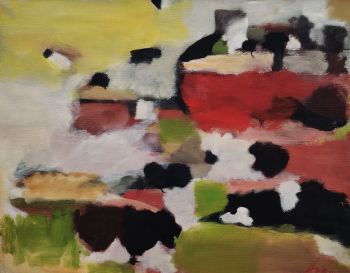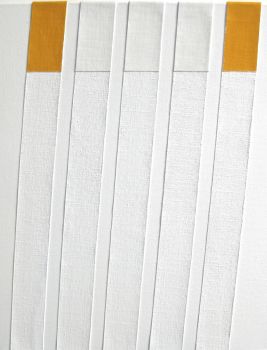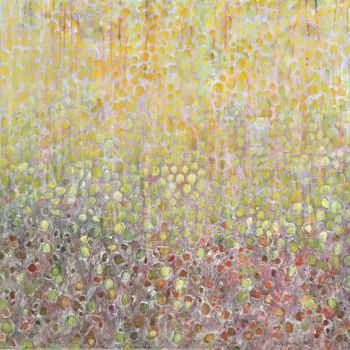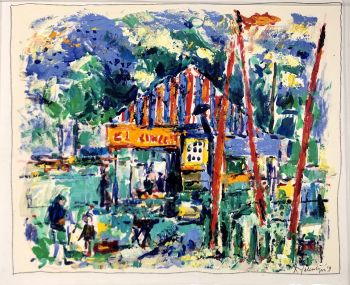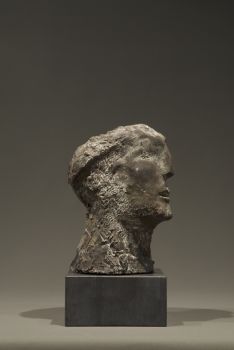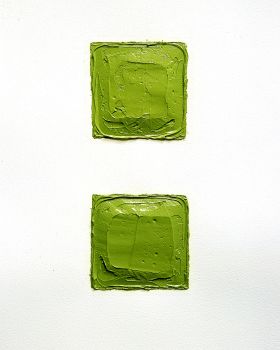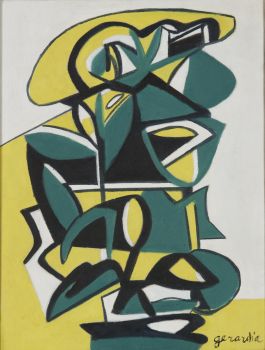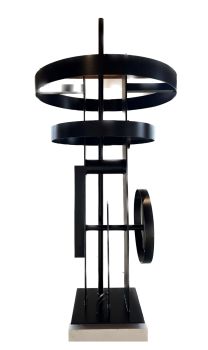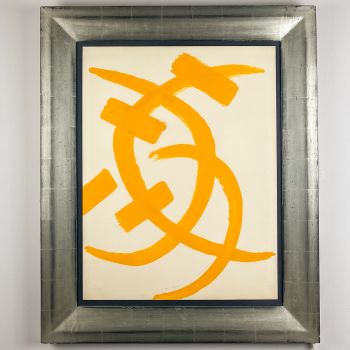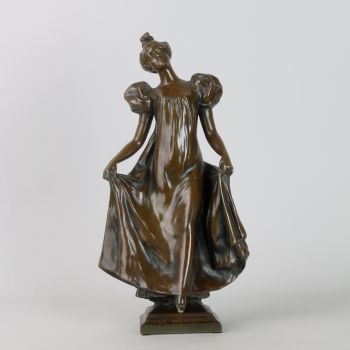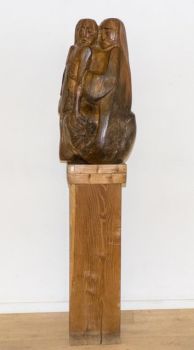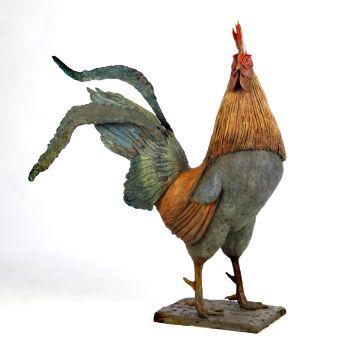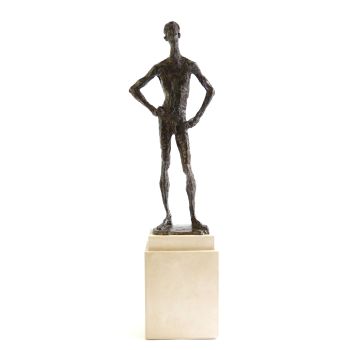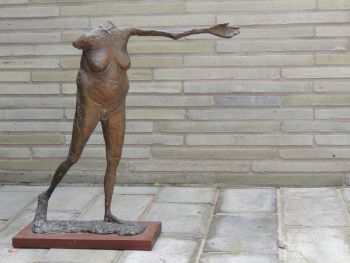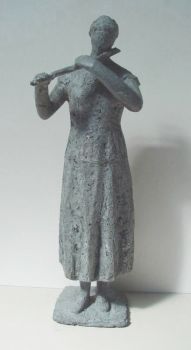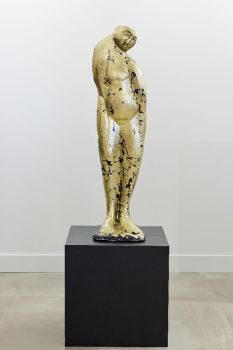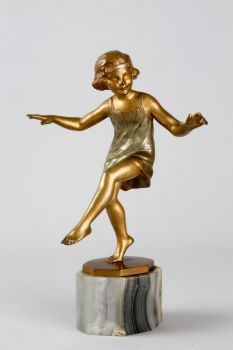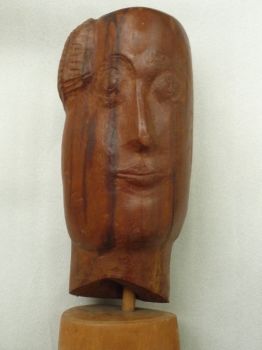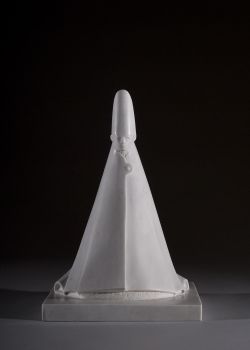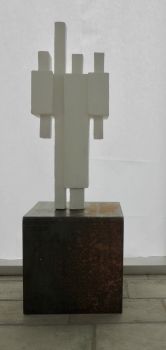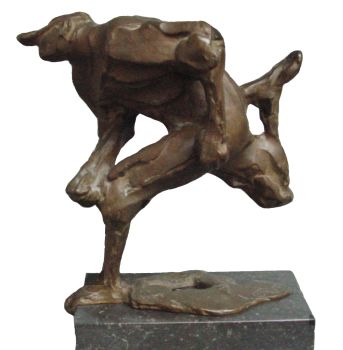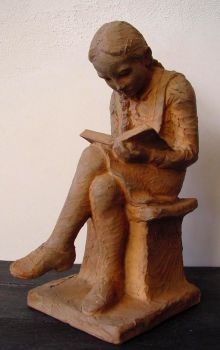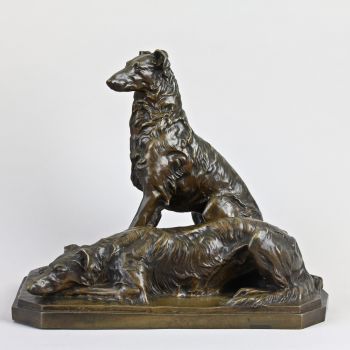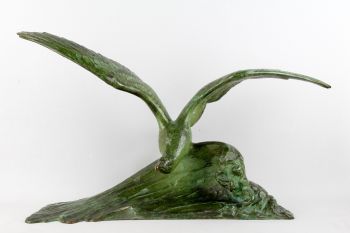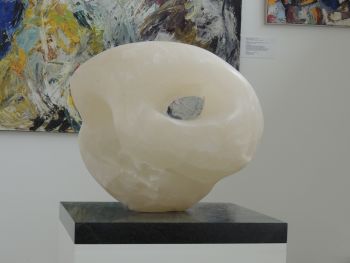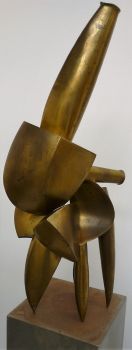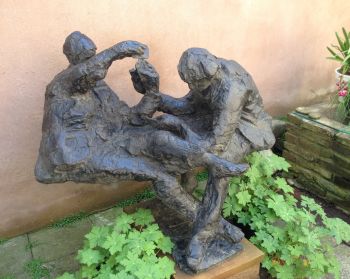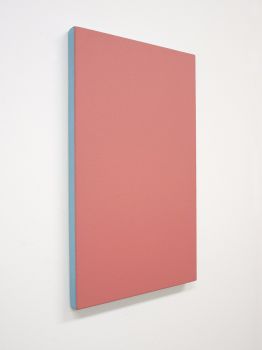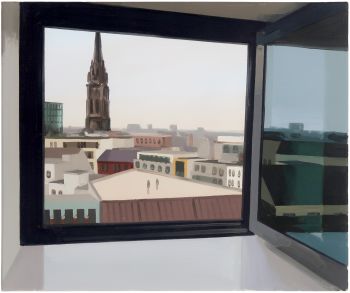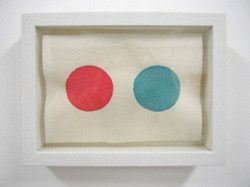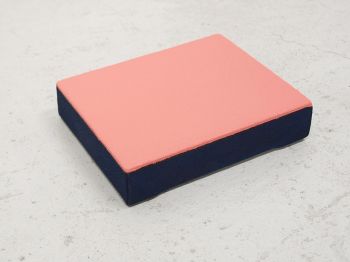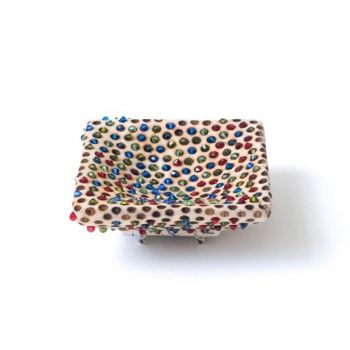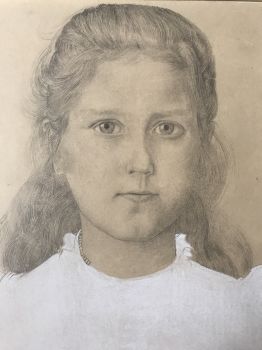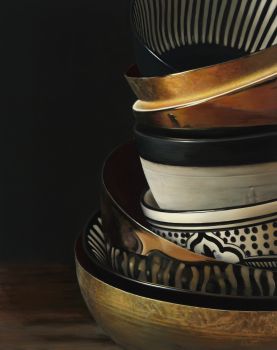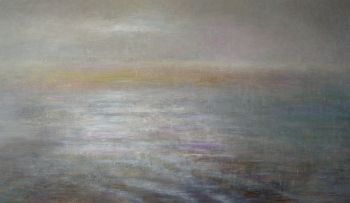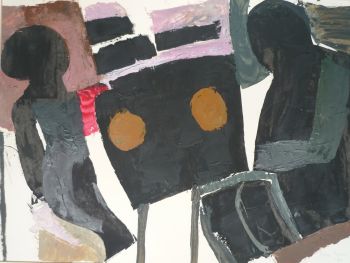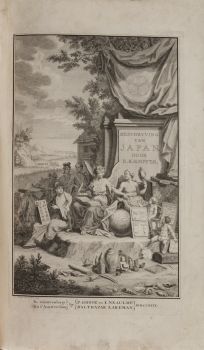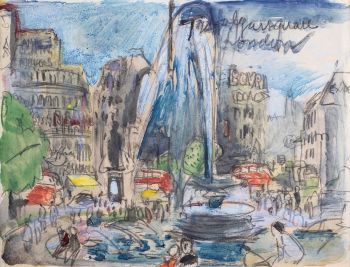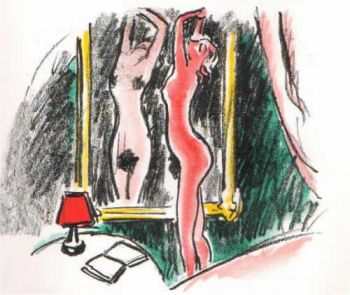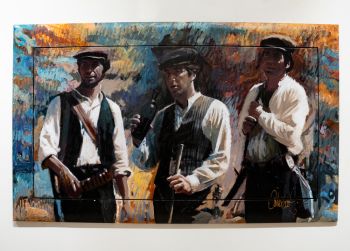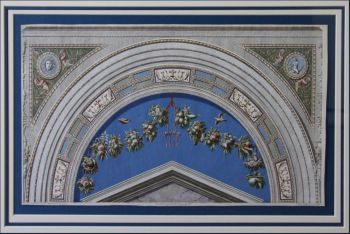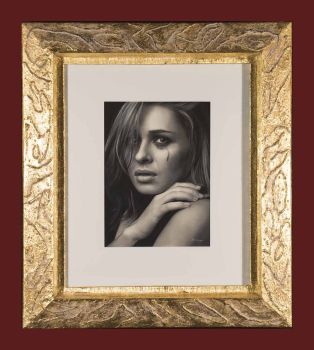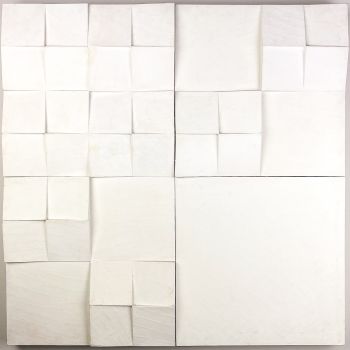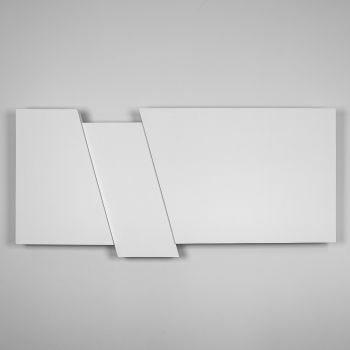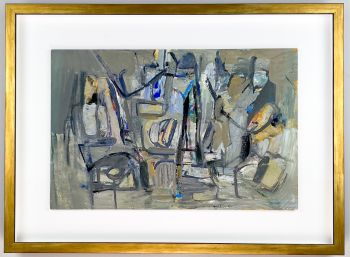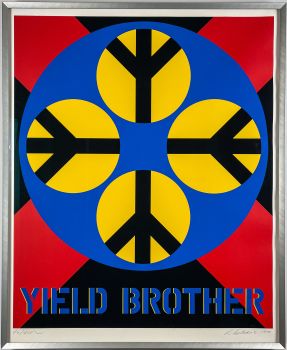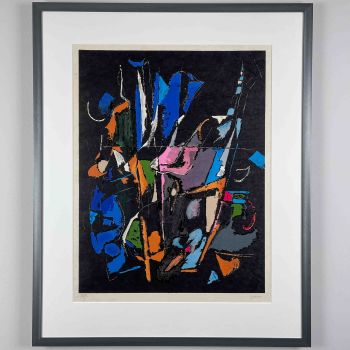“Koan” 1988 – papier-mâché / cotton on paper, original frame 1988
Shinkichi Tajiri
TextilPapelPapel machéAlgodón
62 ⨯ 52 ⨯ 8 cm
ConditionVery good
Precio a consultar
Van Kerkhoff Art
- Sobre la obra de arteA unique sculpture in papier-mâché / cotton laid down on paper. In original frame. Titled, signed and dated by the artist in pencil. Labeled on the back with second signature by the artist.
About Shinkichi Tajiri
Shinkichi Tajiri (Los Angeles 1923 – Baarlo 2009) was a Dutch – American artist of Japanese descent, most known for his sculpturing work.
He received his education at the Art Institute of Chicago leaving for Paris in 1948 where he studied with Ossip Zadkine, Fernand Lèger, Académie Colarossi and the Académie de la Grande Chaumière. In Paris he came into contact with several artists of the CoBrA movement and in 1949 het participated in two exhibitions of Experimental Art (CoBrA) in the Stedelijk Museum in Amsterdam in 1949 and Museé des Beaux Arts, Liège in 1951. In 1956 he moved to Amsterdam together with his wife Ferdi Jansen – also an sculptor – whom he met while studying with Zadkine.
In the late 1950’s he exhibited with several influential Dutch artist like Wessel Couzijn and Carel Visser. In the 1960’s he was invited to represent The Netherlands at the Documenta II (1959), Documenta III (1964), Documenta IV (1968) and the 31st Venice Biennale (1962). In 1969 Tajiri was appointed professor at the Hochschule der Künste in Berlin on request by its art students, where he taught until 1989. From 1962 until his passing away in 2009 Shinkichi Tajiri lived and worked at the Castle Scheres in Baarlo in the Southern part of The Netherlands.
Tajiri was a recipient of many awards and honorary titles, most notable Officer in the Order of Oranje-Nassau, Member of the Royal Academy of Belgium and Knight in the Order of the Dutch Lion. many of his sculptures are part of museal collections ie: Rijksmuseum Amsterdam, Stedelijk Museum Amsterdam, Cobra Museum Amstelveen, Bonnefantenmuseum Maastricht and Museum Het valkhof, Nijmegen.
Signed
Signed by the artist in pencil
Signed on label by the artist (verso)
Condition
Very good original condition, original frame.
Provenance
Private collection, The Netherlands
Bought directly from the artist
Dimensions
Artwork
Height 50 cm
Width 40 cm
Frame
Height 62 cm
Width 52 cm
Depth 8 cm - Sobre el artista
Shinkichi Tajiri, hijo de inmigrantes de primera generación a los Estados Unidos desde Japón, pasó su infancia en Los Ángeles y San Diego. Tras el ataque de 1941 al aeródromo estadounidense en Hawai por parte del ejército japonés, la familia de Tajiri fue enviada al Centro de Reubicación de Poston War, un campo de internamiento en Arizona.
En una combinación de patriotismo y su deseo de dejar el campo, Tajiri pronto se ofreció como voluntario para el ejército y se unió al regimiento estadounidense totalmente japonés, que más tarde se convirtió en el regimiento más condecorado de su tamaño en la historia militar estadounidense. Posteriormente asistió al Instituto de Arte de Chicago de 1946 a 1948, trabajando también para el escultor Isamu Noguchi en Nueva York.
En 1949 se traslada a París y estudia con Ossip Zadkine y Fernand Léger. Principalmente escultor, Tajiri también realizó varias películas, videos, fotografías estéreo y panorámicas y trabajos en papel premiados. Shinkichi Tajiri vio la guerra como un catalizador para convertirse en artista y consideró sus imágenes como una forma de cristalizar sus experiencias de guerra. Los temas principales de su obra son la velocidad, la erótica y la violencia en un enfrentamiento continuo con las tragedias de la Segunda Guerra Mundial y sus secuelas.
En 1967 y 1968 realizó una serie de esculturas titulada Máquinas como forma de protesta contra la violencia de la Guerra de Vietnam. Machine No 7 1967–8 es una escultura de acero, aluminio, plexiglás y hierro cromado con la forma de un híbrido de un avión de combate y una pistola, que encarna las experiencias de Tajiri sobre la violencia de la guerra.
¿Está interesado en comprar esta obra de arte?
Artwork details
Related artworks
- 1 - 1 / 1
Rene Rietmeyer
"Netherlands, The Hague, March 2002"2002
Precio a consultarEuropean Cultural Centre Collection
1 - 4 / 24Arie Teeuwisse
Titania and Nick Bottom (the weaver)20th century
Precio a consultarKunsthandel Pygmalion
Klaas II Mobach
Hanna Mobach, daughter of the sculptor Klaas Mobach, reading1950 - 1970
Precio a consultarKunsthandel Pygmalion
1 - 4 / 24Rene Rietmeyer
TOKYO - Kudan House - January 2021 #042021
Precio a consultarEuropean Cultural Centre Collection
Engelbert Kaempfer
LIBRO DE ENGELBERT KAEMPFER1651 - 1716
Precio a consultarZebregs & Röell - Fine Art - Antiques
1 - 4 / 24- 1 - 4 / 12

